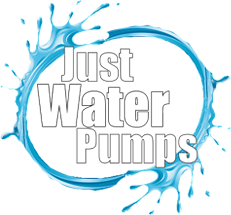Guidelines for Selecting the right Pond Pump
12th Jul 2020
- SAFETY FIRST! Water and power can be fatal!
All installations should be constructed, commissioned and maintained according to any relevant government laws, by-laws and regulations and according to the instruction manual provided with the product. Running garden pumps on extension leads is illegal. An earth leakage (RCD) device must be fitted. Any 240 volt electrical work must be carried out by a licensed electrician.
Recommended usage for lengths of power cable/cord on pumps:
3 pin plug – 2m or 3m cable ................ Minimum length for outdoor use (patios, decks, courtyards)
3 pin plug – 10m cable ........................... Recommended length for outdoor installations; however no more than 2m should be left uncovered by ......................................................................... conduit or similar, and cable must not be left tightly wound in a coil.
2 pin plug – 1.8m cable...........................Indoor use only, aquariums and table fountains
TIP! Pumps don’t last forever. Always install to allow easy access and replacement! - CHOOSE THE RIGHT FLOW RATES
TIP! Use a garden hose to do a mock-up of the installation to get a rough idea of what flow you are trying to achieve.
Suggested flow rates:
Wall and table fountains - 200 to 300 L/Hr , Small statues up to 400mm high - 400 to 500 L/Hr , Medium statues up to 800mm high - 600 to 750 L/Hr, Large and tiered statues up to 1.5m high - 1000 to 1200 L/Hr Statues over 1.5m and pond cascades - 1200 to 2000 L/Hr , *Waterfalls and streams up to 0.4m wide - 3000 to 4000 L/Hr ,*Large waterfalls and streams up to 1.0m wide - 6000 to 12000 L/Hr - TIP! Add 20% to required flow rates to allow for friction loss in pipework.
- DON’T FORGET THE HEAD HEIGHT!
Measure head height from the water level to the highest outlet. Add together the flow rates required, add 20% to allow for friction loss. If more than one function is being performed by the one pump, then choose a pump that can give the total flow at the highest height.
TIP! Remember it is easier to throttle back an oversized pump, but there is nothing you can do with an under-sized pump! - POND SIZE – TURNOVER RATES
Suggested turnover rates: - TUBING SIZE AND LENGTH
TIP!
High fish stocks and koi ponds will require higher turnovers. Discuss this with your dealer for further advice.
| Ponds up to 1000L | once per hour |
| Ponds 1001 - 5000L | once every 2 hours |
| Ponds 5001 - 15000L | once every 3 hours |
| Ponds over 15000L | once every 4 hours |
Undersized tubing severely restricts the performance of the pump. Long runs and high waterfalls may require larger tubing diameters, or multiple tubing. Please enquire if you are unsure.
- COST TO RUN PUMPS - The Cheapest pump is not necessarily the best long term option!
Example: A 18000 L/Hr filter and waterfall pump (250 watt) costs approximately $550.00 per year, run continuously. In comparison, a 3⁄4 hp pool pump 15000 L/Hr (550 watt) would cost approximately $1220.00 per year, run continuously. So a short-term saving becomes a long-term liability!
TIP! Have an electrician set up a daylight sensor switch on waterfall pumps so the pump turns off at night - this saves power and money ! - PUMP DIMENSIONS
We have included the dimensions of all our pond pumps in this catalogue. The sizes are in mm and include the cable exit in the length, and outlet height in the overall height. - DRY-MOUNTING POND PUMPS, IN-LINE USE
Pond Pumps are not designed to be self-priming, so when they are installed in a dry mount or in-line situation, they must have “flooded” suction. That is, the pump must be installed below the water level so that the water gravity-feeds into the inlet of the pump. When dry-mounting, it is also necessary to protect the pump from the sun to avoid over-heating, and install a prefilter to prevent particles entering the suction line and blocking the pump. Not all pond pumps can be dry-mounted, check the tables in this product guide, there is a column that is headed, “DRY-MOUNT FLOODED”, if this says NO, then this pump is not designed for dry mount installations. - NOTE: THESE GUIDELINES ARE BROAD GENERALISATIONS & MAY NOT SUIT EVERY APPLICATION
Please consult your retail specialist for more information and advice. It is the user’s responsibility to ensure that the product chosen is suitable for the users application. Incorrect use of products voids all warranty.



